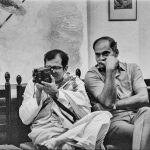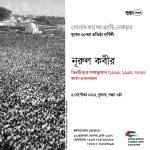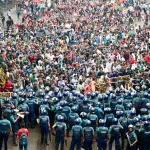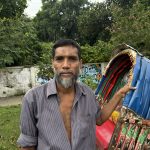


Flashback 01: Yumi Goto
Over the next two weeks we will be featuring a series of interviews called Flashbacks where artists and particpiants talk about what they took away from the Chobi Mela experience. We will have around 6 people give their views on the festival, so stay tuned!
First up, Japanese curator and researcher Yumi Goto who shares with us her opinion on the festival, photography in Bangladesh, and Dhaka in general.
1) What drew you to Chobi Mela? What are your strongest memories?
I remember it being a difficult time, for a moment I wondered if the festival would actually happen. But everything went just as planned, and I got to experience how photography doesn?t always have to be pushed around by politics. Before my departure I heard the roads leading to the airport would be closed the next day, so I left at dawn. Friends at Chobi Mela helped me out and I got home safely.
It was an exciting festival overall. I got to meet a lot of interesting people and a brief encounter with Bangladeshi photographer Munem Wasif just before heading home led us to working together later on. I think the festival really helps build a bridge to the Bangladeshi photo community.
2) What separates Chobi Mela from other festivals?
The local community was so much more involved. I hadn?t seen that level of enthusiasm in any other photo community in Asia. You were able to soak up photography all day long. There were lectures and talks, and the audience really took part in them. It wasn?t just a festive atmosphere, but more a place where people who are serious about photography got down to talking about photography.
3) What is it about Dhaka that has made the biggest impression on you?
I was at the festival most of the time, but right at the end, I went to the market to get some souvenirs. On my way home on a rickshaw I dropped my purse without realising it. This kind man ran all the way to catch up with us and gave me my purse back. It?s always the people you remember.
4) If you were to describe Chobi Mela to a friend who had never been to Bangladesh before, how would you do so?
I?d say definitely go if you want to talk photography. It?s not just the first festival of its kind in Asia, but it?s an international photo festival that just happens to be held in Dhaka.
5) Has coming to Chobi Mela changed your perception Bangladesh?
Oh yes, I had heard Bangladesh was one of the poorest countries in Asia, and yet it holds one of the best international photo festivals in the world every two years. It just goes to show, with dedication and time, it can be done. Not only that, it gets better.
6) What is the one word that best describes Chobi Mela?
Prestigious
Visit Yumi Goto?s website: http://reminders-project.org/





Leave a Reply
You must be logged in to post a comment.